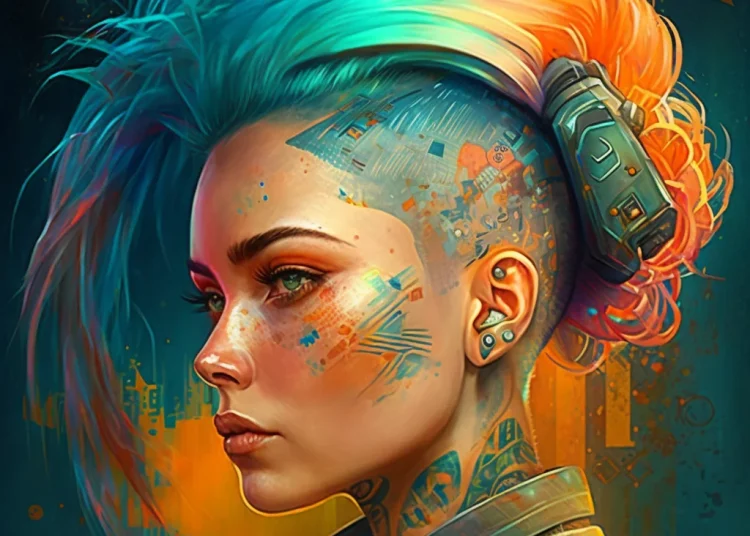In recent years, Character AI technology has made remarkable advancements, creating artificial personalities that feel lifelike. These intelligent models can mimic human behavior, hold meaningful conversations, and even express emotions. However, the increasing realism of Character AI raises questions about its impact and the ethical challenges it presents. Among these challenges lies a growing debate around whether the realism of Character AI, especially those with “no filter” capabilities, crosses boundaries that should not be crossed.
What Is Character AI?
Character AI refers to artificial intelligence models specifically designed to replicate human-like interactions and behaviors. Unlike standard chatbots programmed for straightforward tasks, Character AI uses advanced algorithms and natural language processing to simulate human-like conversations and emotions. These models are increasingly used in gaming, virtual assistants, and even mental health therapy.
When developers create “no filter” versions of Character AI, these models are designed to behave without pre-programmed constraints, allowing users to engage with them in a less restricted and more organic way. While this level of authenticity enhances user experiences, it also introduces potential risks.
The Allure of Hyper-Realistic AI
The appeal of hyper-realistic Character AI is undeniable. With no filter, these AIs can adapt to complex conversational tones, respond to unpredictable scenarios, and simulate human-like personalities with astounding accuracy. This opens up a world of possibilities, such as:
- Enhanced Entertainment: Video games, movies, and virtual experiences become more immersive when AI characters interact seamlessly with players or audiences.
- Personalized Assistants: AI companions can be customized to reflect a user’s preferences, making interactions feel more meaningful.
- Therapeutic Applications: Mental health support tools benefit from relatable and empathetic AI interactions, offering nonjudgmental conversation partners.
However, while realism can improve user engagement, it also introduces unique challenges.
The Ethical Challenges of Character AI with No Filter
- Blurring the Line Between Reality and Fiction
Hyper-realistic Character AI can lead to confusion about whether users are interacting with humans or machines. This issue is exacerbated when no filter is applied, making the AI less distinguishable from real people. Such indistinct boundaries can create emotional attachment or dependency, which may negatively affect users’ mental well-being. - Unregulated Content Generation
With no filter in place, Character AI can generate inappropriate or harmful content, as these systems may respond to sensitive topics without proper safeguards. This raises concerns about the potential misuse of AI in spreading misinformation, hate speech, or explicit material. - Privacy Concerns
Realistic AI often collects data to improve interaction quality. Without clear ethical guidelines, the data collected by “no filter” Character AI models could be misused, posing privacy risks to users. - Manipulation Risks
AI that mimics human emotions can be exploited to manipulate users. For example, hyper-realistic AI could influence decisions, promote certain ideologies, or even encourage harmful behaviors if left unchecked.
The Need for Boundaries
To address the challenges posed by hyper-realistic Character AI, particularly those with no filter, implementing boundaries and ethical guidelines is crucial. Developers and policymakers must consider the following steps:
- Transparent AI Design: Users should always be aware when they are interacting with AI and understand the limitations of its realism.
- Content Moderation: Even no-filter AI models should have built-in safeguards to prevent them from engaging in harmful or unethical interactions.
- Ethical Frameworks: Governments and tech companies need to collaborate on creating industry-wide standards to govern how realistic Character AI can become.
- Public Education: Users must be educated about the risks of hyper-realistic AI and encouraged to engage responsibly.
Balancing Realism with Responsibility
While the potential of Character AI is vast, there is a fine line between realistic functionality and harmful overreach. No-filter capabilities, while alluring, must be tempered with caution. Developers must prioritize user safety and ensure that the realism of AI does not come at the cost of ethical standards.
Conclusion
The rise of hyper-realistic character ai no filter is a testament to how far technology has come, offering exciting possibilities for interaction, entertainment, and support. However, as the technology advances, it is crucial to strike a balance between innovation and responsibility. Character AI with no filter offers unmatched realism, but without ethical considerations, it risks creating more harm than good. Ultimately, the future of Character AI depends on how carefully we navigate its potential while establishing firm boundaries for its use.








